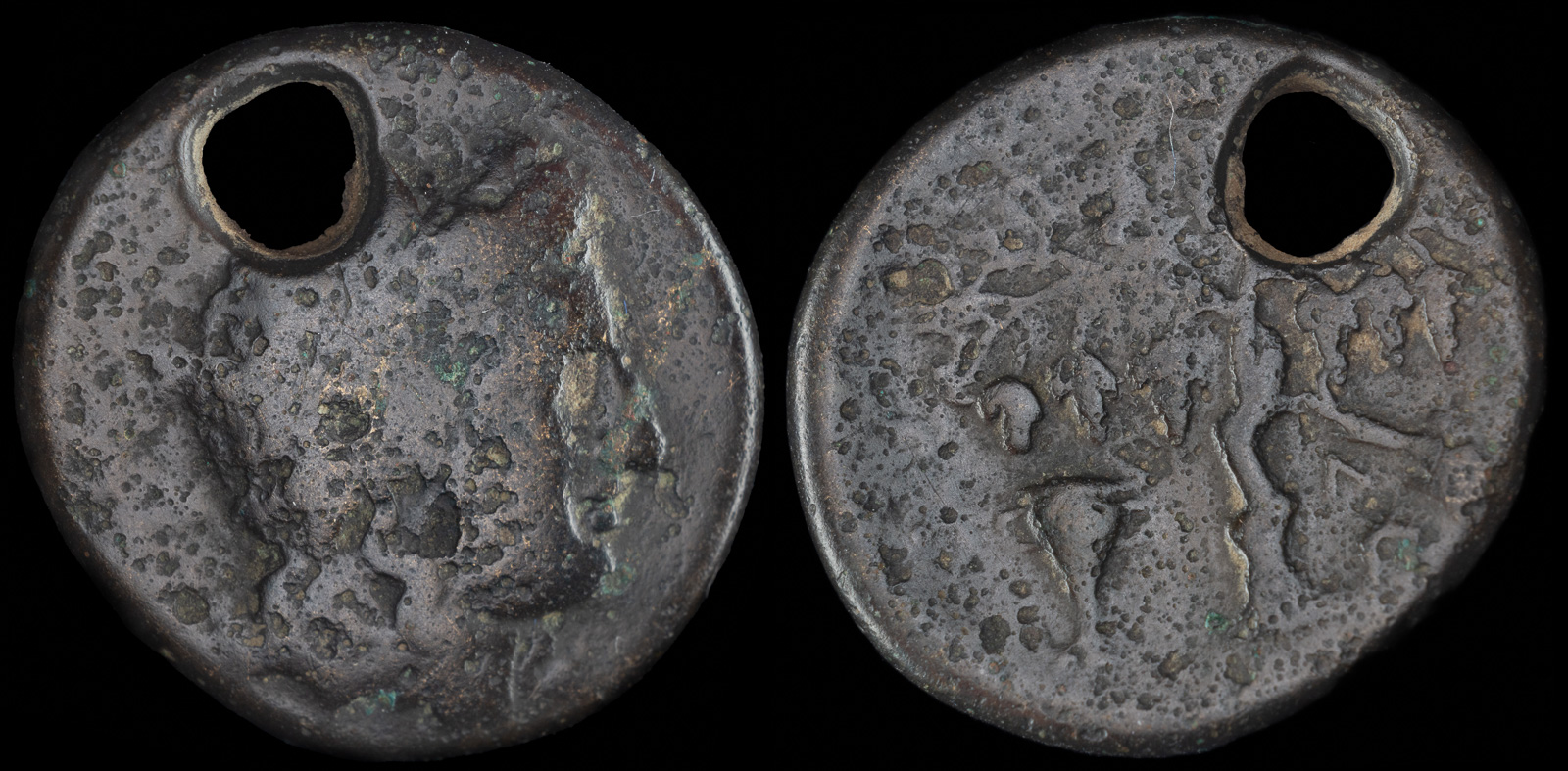
Thessaly, Eurymenai circa 352-344 BCE
Æ 20mm, 6,16g
Obv: Head of Dionysos right; wearing wreath of ivy with tendrils and bunches of grapes, surrounded by dotted border
Rev: Vine with six leaves, six bunches of grapes and tendrils, with r.-facing dolphin to r and conical two-handled cup with tall stem on l. Surrounded by the legend EYPYMEN-A-I-Ω-Ν clockwise. Λ between the vine and the dolphin.
fine, holed
HGC 4, 84; Blomley 2024 EY5 (this coin)
Ex Savoca 2021
The coinage of Eurymenai is very rare, and Blomley in her newly released The Bronze Coins of Eastern Mount Ossa in the Thessalican Perioikic Region of Magnesia lists 19 known examples across all types, museums, auction sales, and known private collections, making it the rarest of the five mints (Homolion, Eureai, Eurymenia, Rhizous, and Meliboia) covered.
Partly due to its rarity and chiefly due to the stunning artwork on well-preserved examples, these types go well beyond my budget. In fact, this is the only example I probably could have afforded, since it may possibly be the worst condition Eurymenai coin known. To see an example of what this used to look like, see this sale. This is the only known example of the type in private hands, with the other two in Berlin and Paris. Of the 19 total known coins of Eurymenai, 8 are in private hands.
The known dies indicate that the mintage was not large. All three examples of this type used the same reverse and obverse die, and in fact the obverse die was reused on seven other types. Blomley speculates that this rare coinage may have been minted to pay a Macedonian garrison housed in the city. Although she doesn’t mention this, I wonder if each year a different reverse was cut, and thus the coinage lasted for seven years (which is close to the 8 years mentioned in the attribution).
This is also my first holey coin. I’ve often found them interesting because the hole adds to the history/mystique of the coin. Clearly this had enough importance to someone to make into a pendant. The wear suggests that it may have been worn for some time, and the residue within the hole suggest it was holed in antiquity. I’d like to think it was worn by the wife of a soldier in the garrison for much of her life, but of course that’s impossible to tell.